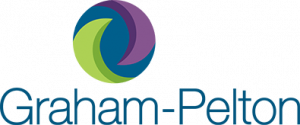Giving USA 2019: The Annual Report on Philanthropy for the Year 2018 is available for purchase now in a variety of formats, including digital and print packages, a comprehensive PowerPoint, Data Tables download, and a free overview infographic. Purchase your copy today.
Generous citizens contributed $427.71 billion in 2018. If every dollar given charitably in the United States last year was laid end-to-end, it would encircle Earth more than 1,500 times.
Though cause for celebration, a deeper look at the results might give nonprofit leaders pause. Considering the figure in inflation-adjusted dollars, total giving decreased $7.4 billion from an all-time high of $435.11 billion (again, adjusted for inflation.)
“After four years of solid growth, including a record-breaking 2017, these lackluster results may be what economists consider a reversion to mean or course correction,” said Graham-Pelton President and CEO Elizabeth Zeigler.
“But there are straggling trends that warrant both focused attention and decisive action. And there are areas of optimistic growth that we can absorb and internalize to influence efforts, no matter the sector or donor we serve.”
Takeaway 1: Economy and policy influenced giving, but not in the ways we were led to believe.
Both economic conditions and the policy environment influenced giving, but the Tax Cuts and Jobs Act had less impact than predicted. Learn more.
Action: Talk to your supporters about how the economic climate affects them, but don’t use policy as an excuse to slow down your asking. Your goal will always remain: to give generous people a reason to give.
Takeaway 2: Enterprising nonprofit sectors are witnessing increased attention and enthusiasm.
The causes that donors support and the way they consider and transmit their gifts is shifting to reflect social norms and emerging interests. Learn more.
Action: Ask yourself, “In what ways can we bring global issues closer to our donor’s front door? In what ways does our mission have a ripple effect across humanity and worldwide?” Build a strong case that connects your donors to the bigger picture.
Takeaway 3: Donor loyalty is not guaranteed and should not be taken for granted.
Although both the education and religion subsectors have built-in donor pools, that no longer guarantees a culture of philanthropic loyalty among their constituents. Learn more.
Action: “Religion has long held the top proportion of total giving, with education a distant second, since Giving USA began measuring this data. But the latest report reveals that giving to religion has dipped below 30% for the first time ever, and education has witnessed anemic growth,” said Zeigler.
“These stalwarts of the community must work harder than ever to connect with their own, reinforcing their relevance and wide reach while engaging in an increasingly sophisticated level of donor development.”
Takeaway 4: The American middle class may be disappearing, but your consideration of them should not.
This is the first year that giving by individuals has fallen below 70% since at least 1954, but this is not a sudden trend, having crept downward since the late 1970s. Itemized giving has decreased across the board, but the rise in upper-income earners appears to have made up the difference. Learn more.
Action: Institutions must also invest in sustaining and growing lower- and mid-level giving in order to build a culture of philanthropy and a pipeline of future major donors.
Takeaway 5: Both giving by foundations and giving to foundations have seen collective gains.
Giving by foundations has grown substantially over the last 40 years, at 291%. The last 10 years has seen a steady growth in foundation assets. And the best news? Reports show commensurate growth in those foundations’ grantmaking. Learn more.
Action: At Graham-Pelton, we know that all sources of giving are, at their core, powered by the individual – whether an independent donor or a member of a foundation. Even small nonprofits should put in place a foundation fundraising plan, including an exploration of the ways your mission matches funding priorities, assigning a corporate and foundation relationship manager, and allocating the appropriate resources to do so.
Graham-Pelton’s mission is to elevate philanthropy so nonprofits can flourish. To that end, Graham-Pelton has released even more insight and analysis on Giving USA, including our special report in partnership with the Chronicle of Philanthropy on “How America Gives,” which highlights the changing giving habits of Americans and how some nonprofits are adjusting their strategies accordingly.
Download the “How American Gives” report here or email [email protected] to receive your copy.



